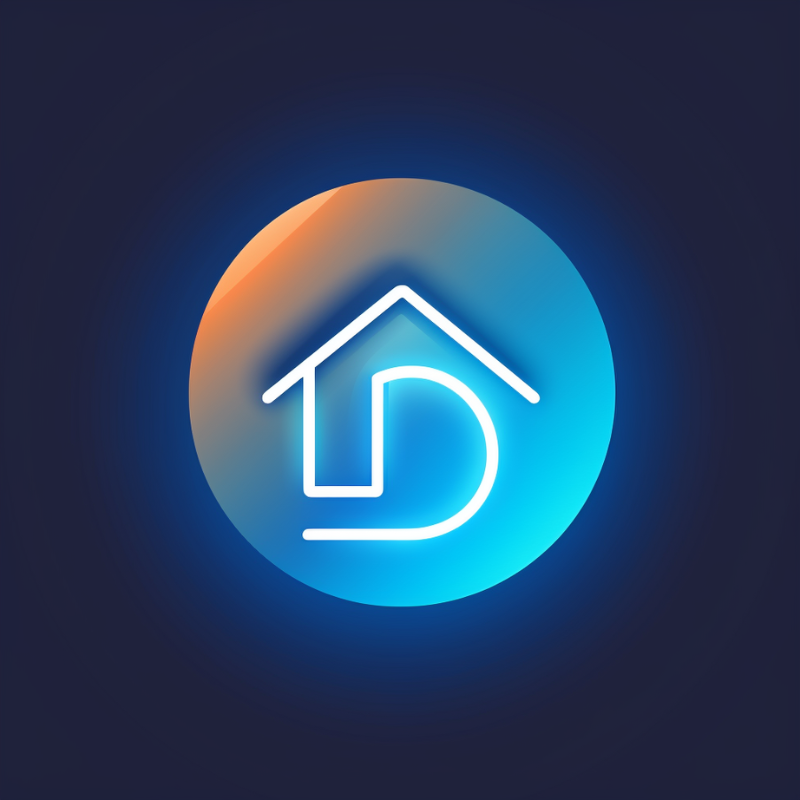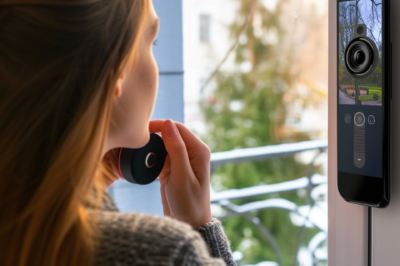
Smart New Ways to Stay Healthy and Energised
-
Discover what biohacking is and how it can help you live a longer, healthier life.
-
Learn how to monitor key health metrics with the latest devices for a personalized health approach.
-
Explore the benefits of intermittent fasting and how to find the optimal foods for your body.
-
Understand the importance of sleep and how to enhance its quality for better health.
-
Get insights on customizing your exercise routine and incorporating regular movement for longevity.
Harnessing Biohacking for a Vibrant Life
Smart advances in technology and biology are bringing new ways to feel better, perform at your peak, and even live longer. The term coined for this new way of living is biohacking. It’s a revolutionary approach to personal health that combines the latest technology with the age-old quest for optimal wellness. It’s not about quick fixes; it’s about making strategic, informed changes that lead to a more vibrant life.
What is Biohacking?
Biohacking might sound like something from a futuristic movie, but it’s really about understanding your body and manipulating your environment to improve your health and performance. Think of yourself as a complex system that can be optimized. Biohacking involves a range of practices, from simple dietary changes to the use of wearable technology, all aimed at fine-tuning your life for the better.
How Do I Start Biohacking?
Starting biohacking is like planting a seed; it requires preparation, care, and patience. Begin by identifying areas in your life you want to improve — be it sleep, nutrition, fitness, or stress management. Educate yourself on the principles of biohacking and start with small, manageable changes. Remember, biohacking is deeply personal, so what works for others may not work for you. Start small, listen to your body, and be patient as you discover what makes you thrive.
For instance, if you want to improve your sleep, you could start by setting a consistent bedtime and creating a pre-sleep routine that includes winding down for 30 minutes without screens. Or, if you’re interested in optimizing your diet, begin by cutting out processed foods and adding more whole, plant-based foods.
Most importantly, don’t rush the process. Biohacking is about long-term changes that lead to a healthier, more vibrant life.
-
Identify areas for improvement
-
Start with small changes
-
Listen to your body and be patient
Why Biohacking Could Be Your Gateway to Health
Why settle for feeling just okay when you can feel incredible? Biohacking is your gateway to unlocking your full potential. By taking control of your own biology, you can make decisions that lead to improved energy levels, sharper mental clarity, and a more robust immune system. And most importantly, you could potentially add more healthy years to your life.
Monitoring Your Biometrics
One of the first steps in biohacking is to get to know your body better than ever before. That means monitoring your biometrics, or biological data, which can provide a wealth of information about your health, and that’s where Smart technology has made life-changing breakthroughs.
Understanding Key Health Metrics
To start, focus on key metrics that can give you insights into your health:
-
Resting Heart Rate (RHR): Indicates overall heart health and fitness levels.
-
Heart Rate Variability (HRV): Measures stress and recovery, telling you how well your body is handling stress.
-
Sleep Patterns: Quality sleep is crucial for recovery and performance.
-
Activity Levels: Tracks how much you move throughout the day.
Monitoring these metrics can help you understand what’s working in your lifestyle and what’s not, guiding you to make better choices for your health.
Top Devices for Health Monitoring
Thankfully, technology has made it easier than ever to track these metrics. Here are a few devices that can help:
-
Smartwatches and Fitness Trackers: Devices like the Apple Watch or Fitbit can monitor your heart rate, activity levels, and even your sleep.
-
HRV Sensors: Tools like the Oura Ring or the Elite HRV sensor provide detailed insights into your HRV and overall recovery.
By regularly checking these devices, you can start to see patterns and make adjustments for better health outcomes.
Remember, the goal is not to become obsessed with the numbers but to use them as a guide for making healthier choices and changes.
Nutrition-Based Biohacking
What you eat plays a massive role in how you feel and function. Nutrition-based biohacking is about finding the right fuel for your body to optimize performance and longevity.
The Power of Intermittent Fasting
Intermittent fasting is a popular biohacking strategy that involves cycling between periods of eating and fasting. It’s not just about losing weight; it’s about giving your digestive system a break and reducing inflammation. Here’s how to get started:
-
Choose an intermittent fasting method, like the 16/8 method, where you fast for 16 hours and eat during an 8-hour window.
-
Start slowly, perhaps with a 12-hour fast, and gradually increase the duration as your body adapts.
-
Listen to your body and adjust the fasting period to suit your individual needs and lifestyle.
Many people report feeling more energetic and focused after adopting intermittent fasting into their routines.

Identifying Foods That Fuel Your Body
Beyond fasting, it’s essential to understand which foods work best for your body. This might mean experimenting with different diets or even getting a genetic test to understand how you process various nutrients. Start by:
-
Eliminating processed foods and sugars, which can cause inflammation and energy crashes.
-
Incorporating a variety of whole foods, such as vegetables, fruits, lean proteins, and healthy fats.
-
Have green juice or herbal tea now and again, rather than a coffee or soda.
-
Tracking how different foods affect your energy, mood, and performance.
-
Investigate new healthy foods: Try including plant based proteins, the FODMAP principles or Keto and Paleo into your diet.
Over time, you’ll develop a personalized eating plan that helps you feel your best.
Sleep Optimization Strategies
Good sleep is the cornerstone of biohacking. It’s when your body repairs itself, making it essential for longevity. But it’s not just about the quantity of sleep; the quality matters too.
Creating the Ideal Sleep Environment
To improve your sleep, start with your environment:
-
Keep your bedroom dark, quiet, and cool.
-
Invest in a comfortable mattress and pillows that support your sleeping style.
-
Consider blackout curtains or a sleep mask to block out light.
-
Use under pillow speakers to listen to soothing ambient background music as you drift off.
-
Use a quality air purifying machine to filter dust and pollutants from your environment.
These changes can make a big difference in how quickly you fall asleep and how deeply you stay asleep.
Tools and Techniques to Improve Sleep Quality
Technology can also play a role in enhancing sleep. Consider these tools:
-
A white noise machine can mask disruptive sounds.
-
A sleep tracker can provide insights into your sleep patterns and potential disturbances.
-
Apps like Calm or Headspace offer guided meditations that can help you wind down before bed.
By leveraging these tools, you can create a pre-sleep routine that sets the stage for restful slumber.
Physical Activity and Movement
Getting outside and taking the time to connect with the natural world around you, even if it’s just sitting in the park or by some water is a natural mood booster. Take a walk around your neighbourhood or cycle to somewhere you haven’t been before.
Movement is a natural biohack. It boosts your mood, sharpens your mind, and, of course, keeps your body strong and supple.
Customizing Your Exercise Routine
Exercise shouldn’t be a chore. It should be something you enjoy and that fits into your life seamlessly. Here’s how to tailor your routine:
-
Choose activities you enjoy, whether it’s dancing, cycling, swimming, or hiking.
-
Vary your workouts to include strength, flexibility, and cardio.
-
Listen to your body and rest when you need to, but also challenge yourself to keep improving.
-
Invest in some Smart fitness equipment to amp up your results.
Remember, the best exercise is the one you’ll actually do. So find what works for you and stick with it.
The Benefits of Regular Movement
Regular movement isn’t just about exercise. It’s about integrating more activity into your entire day. Consider:
-
Standing or using a treadmill desk if you work in an office.
-
Taking the stairs instead of the elevator.
-
Walking or biking to work instead of driving.
-
Wearing a fitness tracker to monitor your daily steps movement.
-
Go for a walk in your lunch break.
These small changes can add up to a big impact on your health.

Mental Fitness Through Biohacking
Your brain is your most powerful tool, and like any other part of your body, it needs to be cared for with a proper fitness regimen.
Cognitive Enhancements
Cognitive enhancements don’t have to involve high-tech devices or supplements. Sometimes, the best tools are the simplest. For example:
-
Regularly challenge your brain with puzzles, learning a new language, or playing a musical instrument.
-
Eat brain-boosting foods like blueberries, nuts, and fatty fish.
-
Get plenty of omega-3 fatty acids, which have been shown to support brain health.
-
Read a book instead of scrolling social media or mindlessly watching television.
These simple strategies can help keep your mind sharp and focused.
Mindfulness and Meditation Practices
Mindfulness and meditation can be powerful biohacks for mental fitness. They can reduce stress, improve focus, and even alter brain structure in beneficial ways. Here’s how to incorporate them into your life:
-
Start with just a few minutes of meditation each day, gradually increasing the time as you become more comfortable.
-
Use apps like Insight Timer or Headspace to guide your practice.
-
Practice mindfulness throughout your day by fully engaging in each moment.
-
Remember to breathe deeply, particularly during stressful situations.
These practices can transform not just your mental health, but your overall well-being.
Stress Management Techniques
Managing stress is crucial for longevity. Chronic stress can lead to a host of health issues, from heart disease to depression.
The Role of Recovery in Health Optimization
Recovery isn’t just about taking a day off from the gym; it’s about giving your body and mind time to heal and rejuvenate. Consider:
-
Taking regular breaks throughout your workday to stretch or walk.
-
Engaging in relaxing activities you enjoy, such as reading or gardening.
-
Practicing mindfulness exercises to calm the nervous system.
-
Listen to music you enjoy and sing along or dance!
These practices help your body and mind bounce back stronger, ready to tackle new challenges.
Practices for Reducing Stress Levels
To effectively manage stress, you need a toolkit of strategies. Here are a few: smart home technology
-
Exercise regularly, as it releases endorphins that naturally combat stress.
-
Connect with friends and family, as social support is a great stress reliever.
-
Get adequate sleep, as it helps regulate mood and improve brain function.
By incorporating these practices into your daily life, you can keep stress at bay and maintain your biohacking momentum.
Putting It All Together: A Biohacking Plan
Now that you’ve learned about various biohacking strategies, it’s time to create a plan that works for you. This isn’t a cut and paste solution; it’s about personalizing your approach to fit your unique needs and goals.
Creating a Schedule That Works for You
Start by mapping out a typical week:
-
Identify times for exercise, meal prep, sleep, and stress-reducing activities.
-
Set realistic goals for each area of your biohacking plan.
-
Be flexible and willing to adjust as you learn what works best for you.
-
Pay attention to how you feel before, during and after engaging in new behaviours.
Consistency is key, so find a rhythm that you can maintain over the long term.

Tracking Progress and Adjusting As Needed
Keep a journal or use an app to track your progress. Pay attention to:
-
How you feel physically and mentally each day.
-
Any changes in your biometrics from the devices you’re using.
-
How well you’re sticking to your plan and where you might need to make adjustments.
-
Aim for small and large goals and reward yourself when you achieve them.
Remember, biohacking is an ongoing process of experimentation and refinement. Don’t be discouraged by setbacks; instead, use them as learning opportunities to further optimize your health.
By taking control of your biology, you’re not just living longer; you’re living better. And that’s the ultimate goal of smart biohacking for longevity.
Putting It All Together: A Biohacking Plan
With the wealth of biohacking strategies at your fingertips, the next step is integrating them into a cohesive plan that harmonizes with your life. It’s about creating a blueprint for living that is as unique as your DNA, and just as importantly, it’s about making that blueprint adaptable as your needs and goals evolve.
Creating a Schedule That Works for You
Embarking on your biohacking journey begins with setting a schedule that resonates with your lifestyle. Start by pinpointing the times of day when you’re most energetic for workouts, and the moments when you can relax and unwind. Ensure there’s a slot for meal planning with nutritious foods that energize you, and don’t forget to carve out at least seven hours for a rejuvenating sleep each night. As you design your schedule, remember to weave in flexibility for life’s unpredictable moments.
Tracking Progress and Adjusting As Needed
Just as a gardener tends to their plants, observing growth and making adjustments, you must nurture your biohacking plan. Track your progress using a journal or an app, noting how you feel, the quality of your sleep, and your fitness achievements. Reflect on these observations and be willing to pivot your strategies. This might mean adjusting your diet, switching up your workout routine, or experimenting with different sleep hygiene practices to find what truly works for you.
Frequently Asked Questions
Is Biohacking Safe?
Biohacking is generally safe, especially when it involves lifestyle and dietary changes or the use of technology to monitor health metrics. However, as with any health-related endeavor, it’s essential to do your research and, if necessary, consult with healthcare professionals, particularly when it comes to more invasive biohacking methods. It’s also crucial to listen to your body and not push it beyond its limits. Safety first—always.
What Are the Most Effective Biohacking Techniques?
The effectiveness of biohacking techniques can vary widely from person to person, but some of the most universally beneficial practices include:
1. Nutrition: Eating a balanced diet tailored to your body’s needs can provide a solid foundation for health and longevity.
2. Sleep: Prioritizing sleep and developing good sleep hygiene can significantly affect your overall well-being.
3. Exercise: Regular physical activity is key to maintaining a healthy body and mind.
4. Mindfulness: Practices like meditation can help reduce stress and improve mental clarity.
Can Biohacking Reverse Aging?
While biohacking cannot reverse aging in the traditional sense, it can help you age more gracefully by optimizing your health and potentially slowing down the aging process. Techniques like proper nutrition, regular exercise, stress management, and sleep optimization can improve your quality of life and may contribute to longevity.
How Long Does It Take to See Results From Biohacking?
The timeline for seeing results from biohacking can vary, as it’s a highly individualized process. Some changes, like improved energy from better sleep or diet, can be felt within a few days or weeks. Other modifications, particularly those related to longevity and disease prevention, can take months or even years to manifest. The key is consistency and a commitment to the process. Biohacking is a journey, not a sprint, so embrace each step and celebrate your progress along the way.



